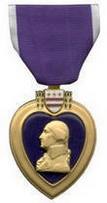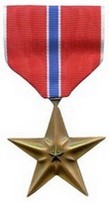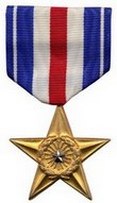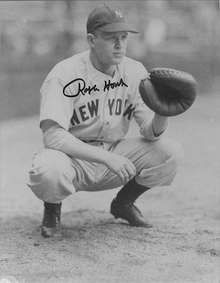



 Ralph Houk
Ralph Houk
Date and Place of Birth: August 9, 1919 Lawrence, Kansas
Baseball
Experience:
Major League
Position: Catcher/Manager
Rank: Major
Military Unit:
Company I, 89th Cavalry Reconnaissance Squadron (Mechanized),
9th Armored Division, US Army
Area Served: European Theater of Operations
Major League Stats: player on Baseball-Almanac
Major League Stats: Ralph Houk on Baseball-Almanac
Ralph Houk rose from private to major during his four years in military service. He was at the Battle of the Bulge and the Remagen crossing. He was awarded the Bronze Star, Silver Star and Purple Heart.
 Ralph
G Houk was born in
Ralph
G Houk was born in Houk played for Neosho in the
Houk attended armored officers' candidate school
at
Houk
went overseas with
Company I, 89th Cavalry Reconnaissance Squadron
(Mechanized) of the
9th
Armored Division
in July 1944. He was stationed at
Houk
was wounded in the calf at
"One day in the middle of the battle I sent
Ralph out in a jeep to do some scouting of enemy troops," said
Fiore. "After being out two nights we listed him as 'missing in
action.'
"When he turned up he had a three-day growth of
beard and hand grenades hanging all over him. He was back of the
enemy lines the entire time. I know he must have enjoyed himself. He
had a hole in one side of his helmet, and a hole in the other where
the bullet left. When I told him about his helmet he said 'I could
have swore I heard a ricochet.' We marked him 'absent without leave'
but were glad to have him back alive."
The
9th Armored later advanced
towards
Later promoted
to the rank of captain he led platoons into trouble spots. "I sent
him on three missions in April of 1945 and one day he returned with
nine prisoners of war," recalled Fiore. "His reports invariably had
an undetermined number of enemy killed."
Houk received the Purple Heart, Silver Star,
Bronze Star with oak leaf cluster, four campaign stars and clusters
during his service in
Following the German surrender in May 1945, Houk
teamed up with Ken Trinkle for the 9th Armored Division baseball
team that made it to the play-offs of the 1945 ETO World Series.
Another teammate was minor leaguer Ed Musial, Stan's younger
brother.
Houk
left the Army with the rank of major and joined the Yankees as a
back-up catcher in 1947, hitting .272 in 41 games. He spent the next
seven seasons as Berra's back-up, before turning his attention to
managing. After three seasons as skipper of the
Time
magazine described Houk as “a rigidly self-disciplined technician,”
in October 1961, who “arrives at Yankee Stadium four hours before
game time, consults with his coaches and studies line-up cards in a
paneled office that is necessarily equipped with a handy silver
spittoon. He takes careful notes during pregame batting and fielding
practice. ‘That way,’ he says, ‘I might notice that one of their
guys is hurt, or pick up one or two other little things.’”
He won World Championships his first two seasons
and the American League pennant in 1963.
Houk served as Yankees' vice president and
general manager until May 1966, before returning to the dugout to
lead the Yankees. From 1974 to 1978, Houk managed the Tigers, and
from 1981 to 1984 he managed the Red Sox. Houk was named as the
Twins' vice president in November 1986.
Ralph Houk is inducted in the Kansas Sports Hall of Fame, and lives
in retirement in
Created July 5, 2006. Updated January 26,
2008.